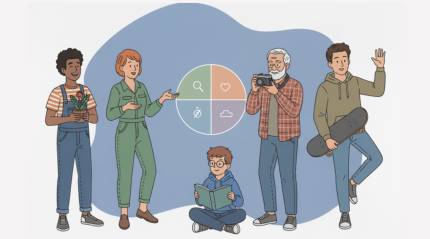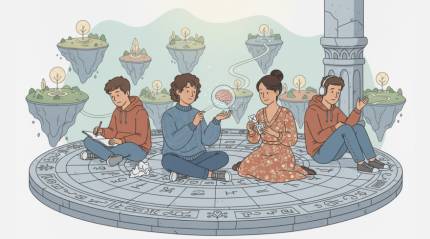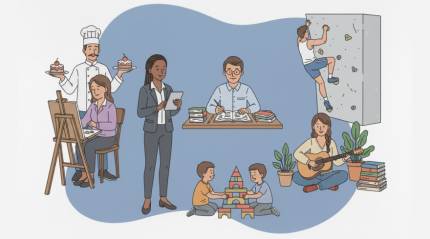Demystifying the Sixteen-Type Test: A Comprehensive Guide for Curious Learners and Practitioners
- 12 November 2025

16 Personalities Test Online: Find Your MBTI Type
Get StartedWhat This Popular Personality Test Is
Across the internet and in countless conversations, the sixteen-type framework shows up as a friendly gateway into self-knowledge. People enjoy the clarity of four-letter codes, the shared language for preferences, and the way these patterns illuminate daily choices. The model’s appeal rests on its intuitive categories, approachable explanations, and the feeling of being seen through a lens that values differences rather than ranking traits.
Amid the buzz, the Myers-Briggs test 16 personalities label often gets tossed around as a catch-all, and yet the heritage of the framework flows from decades of observation about how people prefer to gather information and make decisions. Practitioners emphasize that the system describes habitual preferences, not competence, while responsible use invites reflection rather than rigid self-typing. That balance, insight without constraint, keeps the framework both accessible and meaningful to first-time explorers and seasoned professionals alike.
In practice, enthusiasts trade stories about career fit, communication blind spots, and energizing work styles. In many articles, the phrase MBTI 16 personalities Myers-Briggs surfaces as shorthand for a family of assessments, although organizations carefully distinguish between accredited instruments and lookalike quizzes. With thoughtful interpretation, the model offers a nonjudgmental vocabulary for discussing differences, which can lower defensiveness and strengthen collaboration across teams and communities.
- Gives a shared language for preferences without ranking people.
- Encourages curiosity about differences rather than conformity.
- Supports structured reflection in career planning and relationships.
- Provides a map for growth while avoiding prescriptive labels.
How the Model Works: Four Dichotomies, Cognitive Preferences, and Type Dynamics
The framework rests on four preference pairs: energy focus, information gathering, decision-making style, and orientation to structure. These pairs combine into sixteen patterns that describe common ways people tend to perceive and decide. Rather than dictating behavior, the model highlights preferred approaches, acknowledging that people can and do flex beyond their comfort zones when context demands.
When people first explore types, the Myers-Briggs 16 personality test description typically introduces the four pairs, Extraversion–Introversion, Sensing–Intuition, Thinking–Feeling, and Judging–Perceiving, and a four-letter code that summarizes tendencies. A richer understanding also considers how these preferences interact as a system, such as dominant and auxiliary processes, which can explain why people appear different at work versus at home. For newcomers, this depth clarifies why two individuals with the same letters may still express their patterns in distinct ways.
Beyond the basics, advanced practitioners discuss type development over the lifespan and how stress can trigger less-preferred functions. Beyond basic dichotomies, the wording 16 personalities test Myers-Briggs often shows up in quick guides that contrast instruments, though shortcuts can blur critical distinctions, like ipsative versus normative scoring. By appreciating nuance, function order, context, culture, and maturity, learners avoid caricatures and gain a more accurate, humane picture of human variability.
- Four pairs combine into sixteen recognizable preference patterns.
- Type dynamics explain differences among people with the same code.
- Preferences are not skills; growth expands flexibility beyond comfort.
- Context and development shape how a type shows up across life roles.
Benefits for Personal Growth, Relationships, and Everyday Decision-Making
Personal insight begins with noticing where energy flows easily and where friction accumulates. Many people discover that small adjustments, protecting quiet time, scheduling brainstorming at the right moment, or reframing feedback, dramatically improve well-being. By naming core preferences, the framework grants permission to design life around strengths while consciously practicing the opposite side when it serves goals.
For self-reflection, the expression Myers-Briggs 16 personalities test often draws in curious newcomers who want a readable doorway into temperament mapping and practical self-coaching. Once initial curiosity is satisfied, sustainable growth usually involves journaling patterns, seeking real-world experiments, and revisiting insights after major life transitions. This cycle helps refine self-knowledge beyond first impressions, turning a snapshot into an ongoing, adaptive practice.
Relationships also benefit from preference literacy, because it reframes conflict as difference rather than defect. In relationship coaching content, the compound term Myers-Briggs personality test 16 personality occasionally appears, and it underscores how labels can shape expectations if applied too rigidly. A better path is to use preferences as hypotheses: ask clarifying questions, observe energy signals, and co-create agreements about communication cadence, decision timelines, and recovery time after intense interactions.
- Design routines around energizing preferences to reduce burnout.
- Use experiments to practice the opposite side and build range.
- Translate differences into practical agreements with partners or friends.
- Revisit insights after big changes to keep your self-map current.
Workplace Applications: Team Culture, Leadership, Hiring, and Collaboration
Organizations turn to type-informed dialogue to foster psychological safety and reduce unproductive friction. When teammates grasp that others may prefer big-picture ideation or detailed sequencing, they customize collaboration rituals: agendas, brainstorming formats, and decision checkpoints. This shifts debate from personal style clashes to process design that supports diverse contributions.
Within onboarding programs, a casual Myers-Briggs 16 personalities quiz might spark curiosity before deeper training clarifies intent, boundaries, and ethics. Thoughtful workshops avoid stereotyping and emphasize data-informed flexibility: let people disclose preferences voluntarily, use findings as a conversation starter, and link insights to concrete behaviors like meeting facilitation and feedback norms. Leaders can model range by flexing their approach to match audience needs.
Responsible talent conversations consider multiple signals, skills, outcomes, values, not just a four-letter code. For structured talent reviews, references to the myers 16 personality test sometimes stand in for broader discussions about preference evidence, but savvy HR teams emphasize that selection decisions must rest on job-relevant criteria. The best use of type in organizations is developmental: coaching, conflict navigation, and culture-building where voluntary participation and informed consent are standard.
- Use preference awareness to calibrate meetings, projects, and timelines.
- Avoid stereotyping; focus on behaviors and outcomes in context.
- Apply type ethically for development, not as a hiring gate.
- Encourage voluntary sharing and ongoing consent in team settings.
How to Take, Interpret, and Apply Results for Real-World Impact
Approach any assessment with curiosity and a growth mindset, not as a definitive verdict. Before you answer, think about what is natural for you when you are relaxed and free to choose, rather than what your current role demands. Honest responses produce a more accurate map you can use to design better days and more humane collaboration habits.
Around the web, searches for Myers-Briggs 16 personality test free resources are common, yet quality ranges from playful to rigorous depending on methodology and validation transparency. If you try multiple questionnaires, compare narratives, look for consistency in your core preferences, and sanity-check claims that sound absolute. When possible, pair self-reflection with conversations and feedback from people who know you in different contexts, it deepens the picture.
| Preparation | Reflect on your natural tendencies when stress is low and choice is high. |
| Answering | Choose the option that feels most effortless over time, not just recently. |
| Verification | Read type descriptions, highlight resonant phrases, and note mismatches. |
| Application | Turn insights into experiments: calendar tweaks, meeting norms, and recovery plans. |
If you want structured guidance, consider materials that explain dynamics, development, and ethical use beyond the first four letters. If you want a no-cost starter, a phrase like Myers-Briggs 16 personality types test free will surface many quick checklists, but you should verify authorship, scoring approach, and whether the tool distinguishes preference from proficiency. Over time, keep a journal of situations where you flexed effectively, and capture lessons learned so your type knowledge becomes practical wisdom.
- Answer for the “real you” across years, not the “ideal you” or your job persona.
- Validate results by reading narratives and gathering outside perspectives.
- Translate insights into tiny, repeatable behavioral changes.
- Reassess patterns after role changes or life transitions.
FAQ: Clear Answers to Common Questions
Is this a scientific tool or just a fun quiz?
The framework is best viewed as a structured lens for discussing preferences, not a diagnostic of talent or mental health. Some instruments that measure these preferences have supporting reliability data, while other lookalike quizzes do not. The most responsible use is developmental: reflection, language for differences, and practical agreements that make work and relationships smoother. Always pair type insights with context, behaviors, and outcomes rather than relying on letters alone.
Where can I try it without paying?
Plenty of no-cost questionnaires exist online, and they can be helpful introductions when treated as conversation starters rather than verdicts. Despite the convenience, searching Myers-Briggs 16 personalities test free can yield tools with unknown accuracy, so evaluate disclaimers, read about methodology, and compare narratives across sources. To go deeper, consider guided debriefs or educational resources that emphasize ethics, development, and healthy skepticism. Your goal is a useful map, not a perfect label.
Does it measure ability or predict job performance?
No, preference patterns are not measures of competence, intelligence, or character quality. In academic settings, the wording Myers-Briggs personality test 16 personality types can oversimplify a framework that describes habitual approaches to perception and decision-making rather than capability. Hiring and promotion should rely on validated, job-related assessments and evidence of results, while type-informed dialogue supports collaboration, feedback, and growth. Used this way, the lens complements, not replaces, performance data.
Why do people sometimes get different results on different days?
Short quizzes can be sensitive to mood, situational demands, or ambiguous items, especially when questions are interpreted through the lens of current roles. That is why narrative verification, reading descriptions, highlighting resonance, and testing hypotheses in real life, is essential. Over time, patterns that remain stable across contexts are more likely to reflect genuine preferences, while situational behaviors can ebb and flow with environment and goals.
How should teams use type ethically?
Keep participation voluntary, avoid stereotyping, and anchor conversations in observable behaviors. Use insights to design better processes, clear agendas, decision checkpoints, and recovery time, rather than to assign people to boxes. Combine type discussions with strengths, values, and skills frameworks so that no single lens carries too much weight. Above all, invite ongoing consent and keep psychological safety at the center of every team practice.



